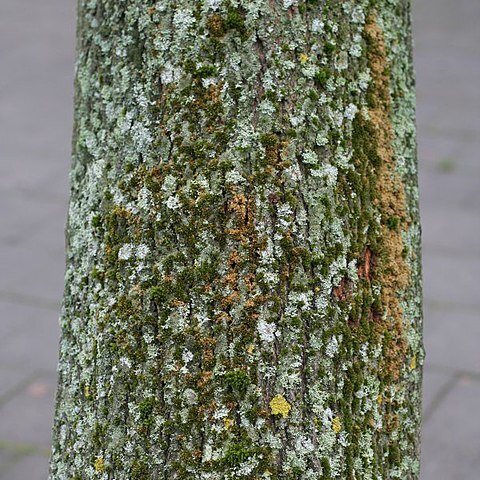Plants small, loosely caespitose to caespitose, green or yellowish green above, yellowish brown to brown below; corticolous. Stems up to 13 mm tall, occasionally forked, scarcely tomentose below; in section subround to subpentagonal, central strand absent or cell walls collapsed, inner cortex 4-11 cells across, thin-walled to incrassate, outer cortical cells weakly differentiated, smaller, in 1 or 2 rows, incrassate, epidermis not differentiated. Leaves larger above, erect, frequently flexuose when dry, erect-spreading to spreading or reflexed below when wet, unistratose; ovate-lanceolate or oblong-lanceolate to lanceolate, (1.5-) 1.8-2.8 (-3.0) mm long; ventral surface keeled; apex gradually or abruptly aristate, 0.1-0.5(-1.0) mm long, cells elongate, incrassate, yellowish or hyaline, occasionally channelled; margins broadly recurved to revolute, frequently plane above and below, entire, crenulate to denticulate at apex, unistratose. Costa merging with apical cells, occasionally ending below apex in lower leaves; superficial cells rounded above, rectangular to linear below, flat to bulging dorsally, smooth or weakly papillose; in section crescent shaped to subround, bulging dorsally, cells scarcely differentiated. Upper laminal cells rounded-hexagonal, thin-walled or occasionally incrassate, thickened at the corners, bulging, 15-25(-30) µm, smooth or weakly papillose; basal cells rectangular to quadrate, smooth or walls papillose, thin-walled or occasionally incrassate. Gemmae fusiform, on lamina, up to 19 cells long, reddish brown, smooth. Autoicous. Perigonia gemmate, on short or numerous on long branches, occasionally appearing to be on separate plants. Perichaetia terminal; leaves scarcely differentiated, as long as stem leaves or inner leaves smaller. Seta short, 0.3-0.8 mm long, ± straight. Capsule emergent, ovate-cylindrical, 1.2-2.1 mm long, weakly 8-ribbed, neck short; exothecial cells rectangular, thin-walled, weakly differentiated along ribs, smaller towards mouth, incrassate; stomata cryptopore, on base of urn. Peristome double; exostome teeth 16, narrowly subtriangular, frequently perforated above, 130-260 µm long, yellowish or brownish, recurved in old capsules, densely papillose to striolate-papillose; basal membrane absent, processes 16, linear, 150-190 µm long, yellowish or hyaline, smooth to spiculose. Operculum conic-apiculate, 0.2-0.4 mm long, yellowish brown to brown. Calyptra 1.5-2.3 mm long, smooth to scabrous, hairs uniseriate above to multiseriate below, denticulate. Spores 13-23 µm, granulate.
More
Plants 0.2-0.7 cm. Stem leaves loosely erect when dry, ovate-lanceolate to oblong, 1.8-3 mm; margins revolute nearly to base of awn, ± serrate in awn; apex gradually acute, awn present, hyaline; basal laminal cells broadly rectangular, walls thick, not nodose; distal cells 14-24 µm, 1-stratose, smooth or papillae 1 or 2 per cell, conic, small. Specialized asexual reproduction by gemmae on leaves. Sexual condition autoicous. Seta to 1 mm. Capsule immersed to emergent, oblong to oblong-cylindric, 1.2-1.8 mm, wrinkled or moderately 8-ribbed when dry; stomata immersed; peristome double; prostome absent; exostome teeth 16, reflexed when old and dry, longitudinally striate or coarsely and densely papillose; endostome segments 16, not well developed, of 1 or 2 rows of cells, densely papillose. Calyptra conic-oblong, smooth, naked or hairs few, smooth. Spores 13-20 µm.
Plants caespitose. Stems up to 13 mm long. Leaves erect and flexuose when dry, lanceolate, mostly 1.8-2.8 mm long, ventral surface keeled; apex aristate, cells elongate, incrassate; margins entire to denticulate at apex; costa merging with apical cells. Upper laminal cells rounded-hexagonal, smooth or weakly papillose. Gemmae fusiform, on lamina. Capsule emergent, weakly 8-ribbed; exostome teeth and endostome processes 16.

